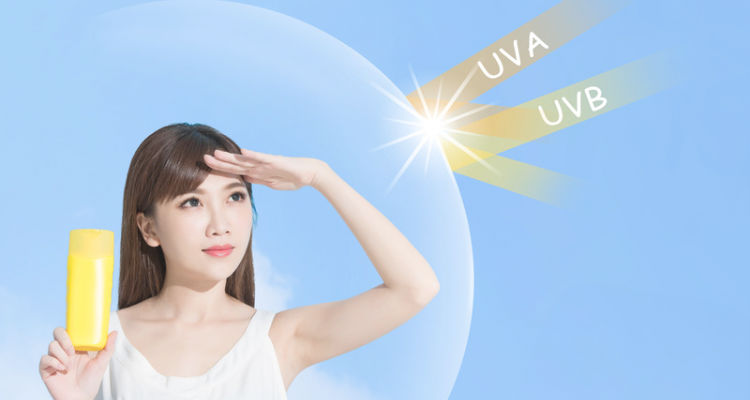Exposure to the sun and ultraviolet radiation are harmful factors for the skin and that is why it is important to protect it. But, do you know what ultraviolet rays are, how UVA and UVB rays differ, and how they affect our skin?
Key Takeaways:
|
UV radiation, originating from the sun, possesses the ability to deeply penetrate the layers of the skin, potentially posing risks to one's well-being based on the intensity and wavelength of the radiation. Within the realm of ultraviolet rays, three distinct groups exist UVA, UVB, and UVC, each characterized by the energy they convey. Notably, UVC rays are obstructed by the protective ozone layer and thus do not reach the Earth's surface, leaving our primary concern focused on UVA and UVB rays.
Although basking in the sun can generate a sense of well-being, it is imperative to remain mindful of its adverse consequences, including sunburn, premature aging manifested through wrinkles, and heightened susceptibility to skin cancer. While it holds true that UVB rays facilitate the production of vital vitamin D3 for bone health, a mere exposure of 20 to 30 minutes per day suffices to fulfill this requirement.
What are UVA rays?
UVA rays, despite being the ultraviolet rays with the lowest energy, pose a substantial threat by inflicting harm upon the deepest layers of the skin. These rays induce the generation of free radicals, triggering the acceleration of aging processes and the emergence of unsightly skin spots. Notably, the repercussions of UVA rays manifest over the long term, underscoring the crucial need for safeguarding oneself against their impact to avoid the onset of wrinkles.
While natural UVA rays typically do not induce burns, their extended wavelengths delve into the depths of the dermis, stimulating the development of a tan. However, simultaneously, they wreak havoc on the connective tissue beneath the epidermis, resulting in diminished skin firmness. It is imperative to note that a heightened concentration of UVA radiation can significantly contribute to the development of skin cancer.
What are UVB rays?
UVB radiation represents about 5% of the ultraviolet radiation that reaches the earth and initially causes the most obvious protective reaction of the skin to the sun. It penetrates the upper layers of the epidermis and quickly tans them.
This type of ultraviolet radiation has more energy than UVA rays, but remains in the epidermis, the most superficial layer of the skin. This type of radiation is responsible for activating melanin and tanning the skin, but it is also the cause of sunburns.
If the UVB dose is too strong, the skin can become red and inflamed, thus causing a sunburn. This is a serious alarm signal sent by the skin cells. Now it is up to the cell's own repair system to act against the damage. The more frequent and intense the exposure to the sun, the more serious the damage will be, thus increasing the risk that the repair processes are exhausted and do not work correctly.
How are UVA rays different from UVB rays?
The main difference between UVA and UVB rays is the amount of energy they contain, and their effects are very different: one (UVA) penetrates a deeper layer of the skin, promoting aging and the other (UVB) stays longer on the surface causing sunburn.
Is it possible to protect yourself from UVA and UVB rays?
Is it possible to shield oneself from the detrimental effects of UVA and UVB rays? Absolutely. The key lies in the consistent use of sunscreen every day, irrespective of cloud cover, as the sun remains a constant presence, even when hidden from view. To ensure comprehensive protection, seek out sunscreens labeled as "broad spectrum" that have received FDA approval, as they effectively guard against both UVA and UVB rays. Be sure to seek out this concise yet impactful phrase prominently displayed on the packaging.
Nevertheless, the optimal approach to shielding oneself from solar radiation involves minimizing exposure to intense sunlight, particularly during the peak hours when the radiation is most potent, typically from 12 p.m. to 4 p.m.
Vigilantly applying sunscreen throughout the year is of utmost importance, with special attention given to the face, as it remains the most consistently exposed area of our body. When selecting a sunscreen, prioritize those with high sun protection factors, as the duration of exposure may vary unpredictably. Additionally, it is crucial to reapply sunscreen every two hours to maintain continuous defense.
| Sun Protection Tip: For adequate sun protection, always check the UV index indicator in your area to know how much sun protection you need to plan on any given day. |
![]()



Share Your Opinion, Please